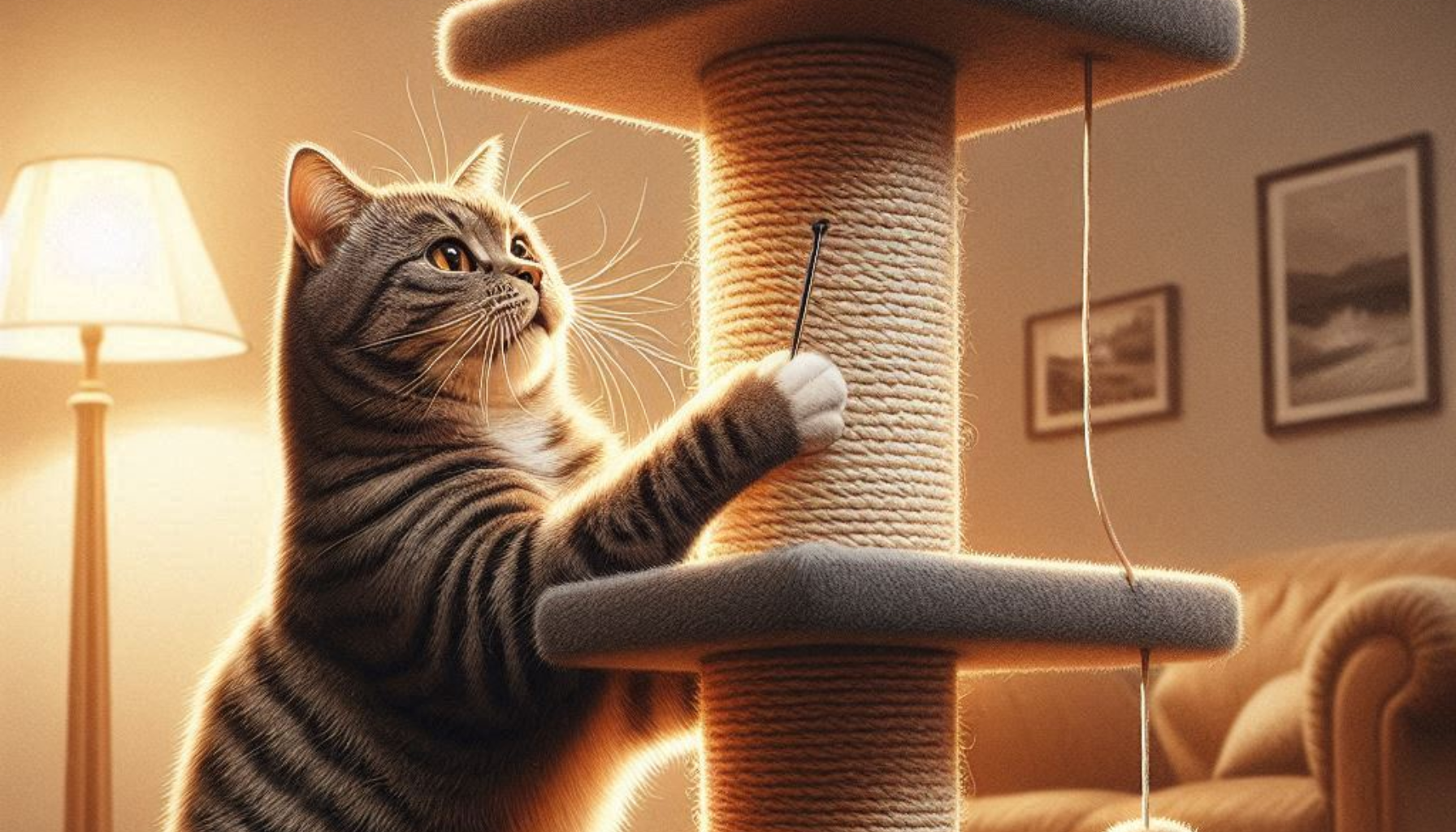Scratching is a natural instinct for cats, but when they target your couch, carpet, or walls, it can be frustrating. Instead of punishing them, the best approach is to redirect their behavior to a proper scratching post.
In this guide, you’ll learn why cats scratch, how to choose the right scratching post, and effective training methods to get your cat to use it instead of your furniture.
1. Why Do Cats Scratch? 🐾💡
Scratching isn’t just about sharpening claws—it’s a natural and essential behavior for cats.
✅ Reasons Cats Scratch:
✔ To mark territory (they have scent glands in their paws).
✔ To stretch and exercise (scratching helps with flexibility).
✔ To relieve stress (it’s a way to release tension).
✔ To shed old claw layers and keep claws healthy.
🚨 Warning: Punishing your cat for scratching won’t work—it’s instinctual! Instead, teach them where to scratch.
2. Choose the Right Scratching Post 🏗️🐾
Not all scratching posts are the same! Your cat may ignore the post if it’s not the right size, shape, or material.
✅ Best Features in a Scratching Post:
✔ Tall enough (at least 30 inches so they can fully stretch).
✔ Sturdy and won’t tip over.
✔ Covered in sisal fabric (better than carpet).
✔ Different textures (cardboard, wood, fabric) to see what they prefer.
📌 Tip: Some cats love horizontal scratchers, while others prefer vertical ones—try both!
3. Place the Scratching Post in the Right Spot 📍🐱
Your cat won’t use the scratching post if it’s hidden in a corner!
✅ Best Places to Put a Scratching Post:
✔ Near their favorite sleeping spot (cats love to stretch & scratch after naps).
✔ Close to furniture they currently scratch.
✔ Near windows or entrances (to mark territory).
🚨 Avoid: Placing the post in a low-traffic area—cats scratch where they spend time!
📌 Tip: If your cat scratches the couch, place the scratching post next to it to redirect them.
4. Use Positive Reinforcement to Encourage Use 🍖👏
Cats respond best to positive reinforcement, not punishment.
✅ How to Train Your Cat to Use the Scratching Post:
1️⃣ Guide them to the post after naps or playtime.
2️⃣ Use treats or catnip to attract them.
3️⃣ When they scratch the post, immediately reward them.
4️⃣ Praise them with gentle pets and a happy voice.
📌 Tip: If your cat loves wand toys, dangle one near the scratching post to encourage interaction.
5. Make Furniture Less Appealing to Scratch 🚫🛋️
If your cat keeps scratching furniture, make it less attractive while directing them to the scratching post.
✅ How to Deter Cats from Scratching Furniture:
✔ Cover the area with double-sided tape (cats hate sticky surfaces).
✔ Use aluminum foil (they dislike the texture).
✔ Spray furniture with cat-safe citrus spray (cats dislike citrus scents).
✔ Rearrange the furniture to block access.
📌 Tip: Always provide an alternative scratching option (like a post) nearby!
6. Use Catnip, Silvervine, or Pheromones for Attraction 🌿🐱
Many cats are naturally drawn to catnip or silvervine.
✅ Ways to Attract Cats to a Scratching Post:
✔ Sprinkle catnip or silvervine powder on the post.
✔ Use a pheromone spray (like Feliway) to create a calming effect.
✔ Rub a little tuna water or wet food on the post for scent attraction.
📌 Tip: Not all cats react to catnip—silvervine works for many that don’t!
7. Redirect Bad Scratching Instead of Punishing ❌🐾
If your cat scratches furniture, don’t yell or punish them—it will only confuse them.
✅ What to Do Instead:
🚶 Gently move them to the scratching post.
👏 Reward them if they scratch the post instead.
📢 Use a firm “No” if caught in the act, then redirect them.
🚨 Never:
❌ Use spray bottles (they create fear, not learning).
❌ Declaw your cat (this is painful and inhumane).
📌 Tip: Be patient—training takes time, but it works with consistency!
8. Provide Multiple Scratching Options 🏠🐾
Some cats prefer variety, so offering multiple scratching surfaces can help.
✅ Good Scratchable Surfaces:
✔ Sisal fabric or rope (cats love the rough texture).
✔ Cardboard scratchers (inexpensive and fun).
✔ Wood posts or logs (mimics tree scratching).
✔ Cat trees with built-in scratchers.
📌 Tip: If you have multiple cats, provide more than one scratching post to avoid competition!
9. Trim Your Cat’s Claws Regularly ✂️🐾
If your cat’s claws get too long, they may scratch more to shed dead layers.
✅ How to Trim a Cat’s Claws:
✔ Use cat nail clippers (not human clippers).
✔ Trim just the tip (avoid the pink “quick” area).
✔ Do it when your cat is calm—after playtime or a nap.
✔ Reward with treats after trimming.
🚨 Warning: Never declaw your cat—it’s equivalent to removing human fingertips and causes lifelong pain.
📌 Tip: If your cat hates nail trims, try soft claw caps as an alternative.
10. Be Patient & Consistent ⏳🐾
Training takes time, but consistency is key!
✅ Keep rewarding good scratching behavior.
✅ Replace scratchers when they get worn out.
✅ Redirect scratching calmly every time it happens.
📌 Tip: Most cats learn within a few weeks if you stay consistent!
Final Thoughts: Save Your Furniture & Keep Your Cat Happy! 🛋️🐱
Redirecting your cat’s scratching habits takes patience, but it’s 100% possible! With the right scratching post, rewards, and redirection, your cat will stop scratching furniture and use their post instead.
✅ Pick a sturdy, tall scratching post.
✅ Place it in a good location.
✅ Use rewards like treats, catnip, and praise.
✅ Make furniture less appealing to scratch.
✅ Stay consistent and patient!
🐾 Your cat wants to scratch—just give them the right place to do it!
